With much gratitude and respect, we honor all who were here before us and are still around us. Till date, these Gurus with their supreme knowledge have continuously enriched and transformed the lives of millions around the world.
Bellur Krishnamachar Sundararaja Iyengar
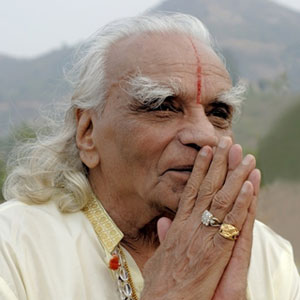 BKS Iyengar – born Bellur Krishnamachar Sundararaja Iyengar (December 14, 1918 – August 20, 2014) was the founder of “Iyengar yoga”, a style of yoga based on proper alignment through the use of supp orts and props. He was introduced to yo ga at a young age which helped cure him of the many ailments he had been suffering from since childhood. Iyengar began teaching yoga in India and then around the world, popularizing the practice in the west. He has authored 14 books on the practice and philosophy of yoga including Light on yoga, Light on Pranayama and Light on the Yoga Sutras of Patanjali.
BKS Iyengar – born Bellur Krishnamachar Sundararaja Iyengar (December 14, 1918 – August 20, 2014) was the founder of “Iyengar yoga”, a style of yoga based on proper alignment through the use of supp orts and props. He was introduced to yo ga at a young age which helped cure him of the many ailments he had been suffering from since childhood. Iyengar began teaching yoga in India and then around the world, popularizing the practice in the west. He has authored 14 books on the practice and philosophy of yoga including Light on yoga, Light on Pranayama and Light on the Yoga Sutras of Patanjali.
K PattabhiJois
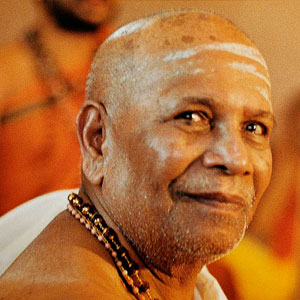 K PattabhiJois (July 26, 1915 – May 18, 2009) developed the now popular style of yoga named Ashtanga Yoga, sometimes referred to as Ashtanga Vinyasa Yoga due to how each posture flows into the next. Jois was introduced to yoga at 12 years of age and began practicing under the guidance of his guru Shri Krishnamacharya. After leaving home at the age of 14, he studied Sanskrit, later married and began teaching Yoga around India. Eventually he introduced his style to Europe and then America. He founded the Ashtanga Yoga Research Institute in 1948.
K PattabhiJois (July 26, 1915 – May 18, 2009) developed the now popular style of yoga named Ashtanga Yoga, sometimes referred to as Ashtanga Vinyasa Yoga due to how each posture flows into the next. Jois was introduced to yoga at 12 years of age and began practicing under the guidance of his guru Shri Krishnamacharya. After leaving home at the age of 14, he studied Sanskrit, later married and began teaching Yoga around India. Eventually he introduced his style to Europe and then America. He founded the Ashtanga Yoga Research Institute in 1948.
Narendranath Datta
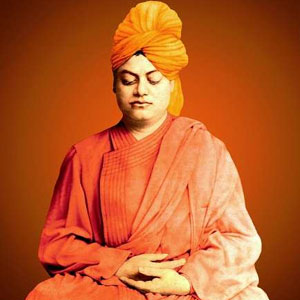 Born Narendranath Datta (January 12, 1863 – July 4, 1902) into an aristocratic Bengali family, Vivekananda was from a young age deeply interested in spiritualty and philosophy. This eventually led him to question the existence of God and seek out the guidance of Sri Ramakrishna, the 19th century Indian mystic. Through working with his guru, Vivekananda found inspiration in service to mankind and after taking vows, entered the swami order, taking on the name Swami Vivekananda.
Born Narendranath Datta (January 12, 1863 – July 4, 1902) into an aristocratic Bengali family, Vivekananda was from a young age deeply interested in spiritualty and philosophy. This eventually led him to question the existence of God and seek out the guidance of Sri Ramakrishna, the 19th century Indian mystic. Through working with his guru, Vivekananda found inspiration in service to mankind and after taking vows, entered the swami order, taking on the name Swami Vivekananda.
After the death of his guru, Vivekananda began touring India and then the west. His journey through India brought him face to face with the troubles occurring around the country igniting in him a desire to lift the people out of poverty and despair. He began a mission of introducing educational reform which brought major changes in the country. In the west, Vivekananda is credited with introducing Hindu philosophies, specifically Vedanta. In his short life (he passed away before the age of 40) Vivekananda gave hundreds of lectures on Hindu philosophy, elevating it to a world recognized religion.
Swami Ramdev
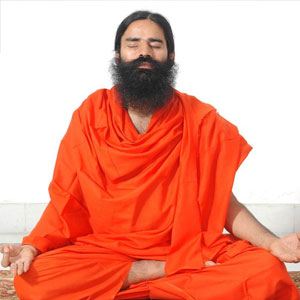 Swami Ramdev founded the Patanjali brand and opened institutions under the same name, including an Ayurvedic hospital, research centers, food products and a yoga camp. He has studied Indian scripture, Sanskrit and credits yoga for curing paralysis he endured since childhood. He founded the DivyaYog Mandir Trust in 1995, and Bharat Swabhiman Trust. He organizes yoga camps for all age groups and promotes yoga as a daily part of people`s lives.
Swami Ramdev founded the Patanjali brand and opened institutions under the same name, including an Ayurvedic hospital, research centers, food products and a yoga camp. He has studied Indian scripture, Sanskrit and credits yoga for curing paralysis he endured since childhood. He founded the DivyaYog Mandir Trust in 1995, and Bharat Swabhiman Trust. He organizes yoga camps for all age groups and promotes yoga as a daily part of people`s lives.
Swami Satyananda Saraswati
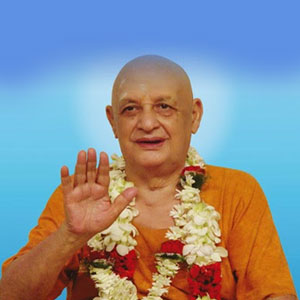 Swami Satyananda Saraswati (December 25, 1923 – December 5, 2009) was born in a farmer`s family and began to have spontaneous spiritual experiences from an early age. Because of these experiences he was advised to find a spiritual master, so he left his home at the age of 18 in search of a guru. At the age of twenty he met Swami Sivananda Saraswati, after which he went to live with him in his ashram in Rishikesh, India. Here Sivananda initiated Satyananda into the swami order and gave him his new name. After years of learning from his guru, Sivananda sent him to share his knowledge with the world.
Swami Satyananda Saraswati (December 25, 1923 – December 5, 2009) was born in a farmer`s family and began to have spontaneous spiritual experiences from an early age. Because of these experiences he was advised to find a spiritual master, so he left his home at the age of 18 in search of a guru. At the age of twenty he met Swami Sivananda Saraswati, after which he went to live with him in his ashram in Rishikesh, India. Here Sivananda initiated Satyananda into the swami order and gave him his new name. After years of learning from his guru, Sivananda sent him to share his knowledge with the world.
Swami Satyananda established the International Yoga Fellowship Movement in 1962, which helped bring about the establishment of ashrams and yoga centers around the world. In 1964 he founded the Bihar School of Yoga, which published his teachings formulated into over 80 books as well as becoming a training center for yoga teachers.
Adi Shankaracharya
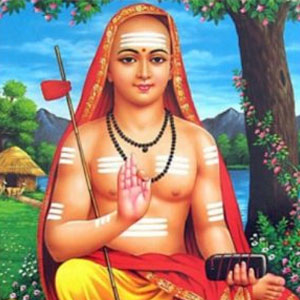 Adi Shankaracharya 8th century Indian philosopher, theologian and poet. At a young age he chose to follow the monastic life to which his mother disapproved. It was only after being caught by a crocodile on a visit to the river that his mother agreed. While in its grip he begged his mother to allow him to become a Sannyasin (renunciant) and when she agreed, only then the crocodile released him. He became a prolific writer on sacred Hindu texts and his works became the foundation of modern Indian thought and unified the teachings of Advaita Vedanta. He is thought to have written over 300 texts and commentaries on the Vedas.
Adi Shankaracharya 8th century Indian philosopher, theologian and poet. At a young age he chose to follow the monastic life to which his mother disapproved. It was only after being caught by a crocodile on a visit to the river that his mother agreed. While in its grip he begged his mother to allow him to become a Sannyasin (renunciant) and when she agreed, only then the crocodile released him. He became a prolific writer on sacred Hindu texts and his works became the foundation of modern Indian thought and unified the teachings of Advaita Vedanta. He is thought to have written over 300 texts and commentaries on the Vedas.
Sage Patanjali
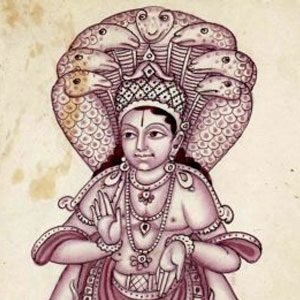 Sage Patanjali Without whom our understanding of yoga would not be possible today.
Sage Patanjali Without whom our understanding of yoga would not be possible today.
Patanjali is thought to have lived in the 2nd century BCE. It is said that he fell from the sky in the form of a little snake, into the hands of his virgin mother who had been praying for a child. The snake represents not only the kundalini energy, but also the thousand headed snake which serves as the god Vishnu’s couch. Patanjali is credited with not only compiling the yoga Sutras from the many sources present at the time, but also writing great works on Ayurveda, mathematics, language and astronomy.
Guru-Bhakti- Ratna Kumari Soma shekhari
 Guru-Bhakti- Ratna Kumari Soma shekhari is a direct disciple of H.D. PARAMAHAMSA OMKARANANDA SARASWATI and the General Secretary of Omkarananda Ashram Himalayas.
Guru-Bhakti- Ratna Kumari Soma shekhari is a direct disciple of H.D. PARAMAHAMSA OMKARANANDA SARASWATI and the General Secretary of Omkarananda Ashram Himalayas.
She has studied Bharatanatyam and Odissi from prominent Gurus, like Dr. Yamini Krishna Murti, Dr. Minati Mishra, and other renowned personalities. She also received intensive training in North-Indian Kathak dance under various dance Gurus from Jaipur, Mathura, Calcutta, Lucknow, Benares, etc. and earned a Prabhakar title for Kathak dance from Prayag Sangit Samiti, Allahabad.
Presently she receives training in Bharatanatyam Temple-Dances by the great Bharatanatyam Guru Shri Deepak Mazumdar, Mumbai.
Kumari Somashekhari has specialized in the devotional aspect of Indian classical dance. Her aim is to revive the ancient temple-style and propagate dance as Sadhana, as a way to God-experience. Her dance is a pure dedication to her beloved Sadgurudev Shri Paramahamsa Omkarananda Saraswati.
Kumari Somashekhari has performed before distinguished gatherings in India and abroad and has been applauded by art lovers and critics for her authentic depiction of moods, for her grace and flawless presentations of various dance forms. One of her memorable performances was during an India-NRI World Convention when she won spontaneous applause. Her dance has several times been broadcasted in various TV-Channels in India and abroad. Somashekhari’s dance performances have been shown in Indian and Foreign Documentary-Films.
The efforts in her cultural field earned her the prestigious Mahila Shiromani Award. Later on she also received other awards, like NatyaRatna Award, Rashtra Shakti Award, etc.
Besides dance, KumariSomashekhari has a great love for the Indian classical music. She received training in Karnatic vocal music, playing the Tambura and the Veena and she also studied Hindustani vocal music. The honour KumariSomashekhari appreciated most was, when Gurudev Paramahamsa Omkarananda Saraswati gave her the title Kalanidhi.
H.H. Shri Swami Vishveshwarananda Saraswati, President, Omkarananda Ashram Himalayas
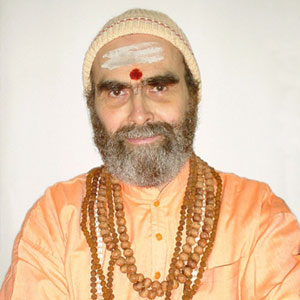 Shri Swami Vishveshwarananda Saraswati is a monastic disciple of His Divinity Paramahamsa Omkarananda Saraswati. He became after his schooling an Electronics Engineer and later started a career as a Pilot.
Shri Swami Vishveshwarananda Saraswati is a monastic disciple of His Divinity Paramahamsa Omkarananda Saraswati. He became after his schooling an Electronics Engineer and later started a career as a Pilot.
At the age of 21 Swami Vishveshwarananda was attracted and greatly influenced by the teachings of Swami Omkarananda and became his disciple.
With the wish to uplift the poor people of Garhwal Himalayas in the field of education Shri Paramahamsa Omkarananda Saraswati sent Swami Vishveshwarananda to the Himalayas, Rishikesh, Muni-ki-Reti.
With the blessings of Paramahamsa Omkarananda Saraswati, Swami Vishveshwaranandaji could establish within a short time over 74 educational, cultural and spiritual Institutions in Uttarakhand, Garhwal Himalayas, out of which are the Omkarananda Saraswati Degree College Deoprayag, 50 Omkarananda Hill Schools (Basic and Junior High Schools) in very remote Himalayan hill areas, an Omkarananda Saraswati Nilayam Inter-College with 2500 students, affiliated to ICSE New Delhi, an Omkarananda Institute of Management and Technology, affiliated to Uttarakhand Technical University Dehradun, and H.N. Bahuguna Garhwal University Shrinagar, the Gurukul Omkarananda Gayatri Ved Vidyalaya at the Ganga, an Institute for Indian Classical Dance and Music, Omkarananda Saraswati Natya Kala Academy, a Sanskrit Library, Public Libraries and 16 beautiful Temples in and near the Headquarters of Omkarananda Ashram Himalayas, Omkarananda Nagar, Muni-ki-Reti, Rishikesh.
Swami Vishveshwarananda was specially honoured by the Government of India for his great contributions in the educational field, on the occasion of Golden Jubilee Celebrations of Independence Day, on 15th August 1998.
In December 1999, the Sadhu communities of Haridwar and Rishikesh initiated him as the Mahant of Omkarananda Ashram Himalayas with the traditional ritual and by offering the symbolic Caadar (“Shawl of Honour”).
On 25th December 2005 Swami Vishveshwarananda was honoured with the prestigious “Pride of Uttaranchal” Award by the Doon Citizens Council, Dehradun.
For his distinguished Services in the Field of Education Swami Vishveshwarananda was awarded by the Independent Schools Federation of India, on 14th February 2006, in New Delhi. The Award was presented by Shri Arjun Singh, Minister of Human Resource Development, Government of India.
On 20th October 2008 Swami Vishveshwarananda was honoured with the “Rashtra Shakti Award” by Star Charities and International Human Rights Foundation, at Breach Candy, Mumbai, during a Symposium on World Peace, where he was the Main Speaker.
Because of his hard work and selfless service, Swami Vishveshwarananda Saraswati was selected by His Gurudev Paramahamsa Omkarananda Saraswati as His Successor.




